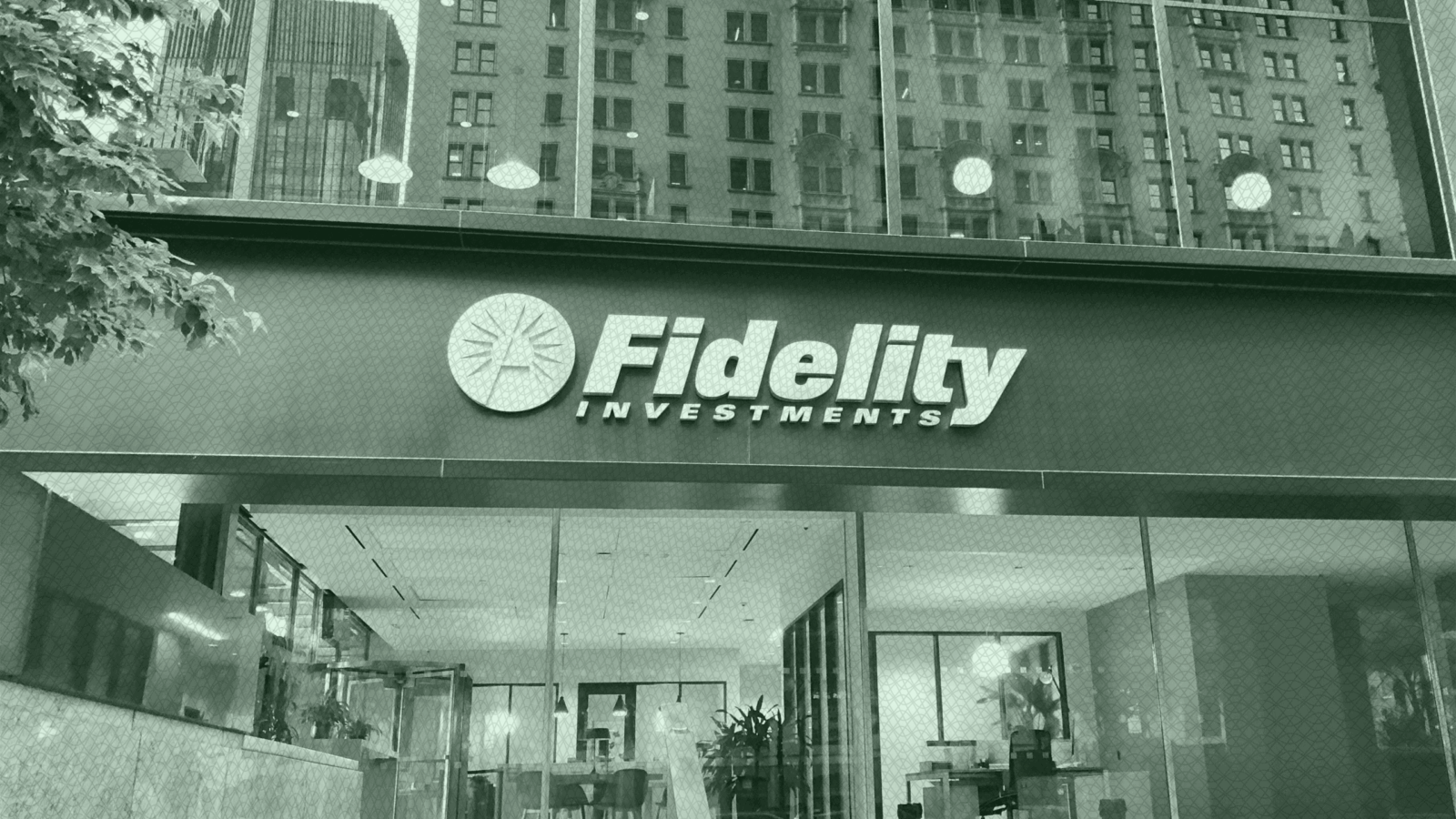Good morning.
Some folks are born silver spoon in hand, as Creedence Clearwater Revival once said, but now Washington might be looking for a bigger bite.
Republican lawmakers and the White House are considering a new tax bracket that would require America’s wealthiest to cough up more dough every April 15. A House proposal would set a new rate of 40% for those earning $1 million or more a year, Bloomberg reported. However, a White House source reportedly said President Trump’s threshold would be far greater than $1 million. The current highest bracket is 37% for individual single taxpayers with incomes greater than $626,350.
We just hope that when the taxman comes to the door, those million-dollar homes aren’t “lookin’ like a rummage sale.”
Behind the Vanguard, Blackstone, Wellington Plan to Launch Private Investments

There’s a new private-markets tag team in town.
Vanguard and Wellington Management are teaming up with Blackstone to launch private and public assets inside a single investment, a hot-button strategy that has been at the forefront of new launches in the asset management industry this year. While specific plans are slated to come in a few months, the group said hybrid public-private investments address one of the most important challenges facing advisors today: how to build diversified portfolios that can chase higher returns. The latest initiative follows a similar, high-profile launch of the State Street and Apollo ETF last month, and filings from the likes of Capital Group and KKR in October.
“This is likely the beginning of a wave of frequent, high-profile partnerships moving forward,” said Aaron Filbeck, managing director of the Chartered Alternative Investment Analyst Association.
Where’s the Beef Wellington?
While it’s too soon to tell how the Vanguard and Wellington products will be used, the new multi-asset products will bake in active and index strategies, and could become more core to portfolios than advisors are used to, Filbeck told Advisor Upside. Because the wealth channel is focused on serving multiple households, not a single institutional client, the most useful fund structures are cheap to scale and customizable. Combining private assets into easy-to-use ETFs could also move alts from the “other” bucket to a more prominent seat in the portfolio. “It’s important to remember that advisors currently have this in the mutual fund and ETF wrappers, so any new products will be anchored to that experience,” he said.
Of course, packaging up private assets that don’t price or trade daily into an ETF is much easier said than done. Some advisors say they aren’t sure how the products would be structured, or if the interests of the fund providers will align with their own. That said, advisors are certainly interested, according to Cerulli:
- Almost half of advisors surveyed said they would consider the products if they had more liquidity.
- Some 40% of advisors were also looking for more transparency, and about 1 in 3 were waiting until the products were easier to access.
Private Party. Filbeck stressed that clients who are interested in private assets will need patience. A decent time horizon will be needed in order to hold private assets to maturity. But it’s not just time: Clients will also need to have the ability and the willingness to lock up those assets.
“While private markets are not appropriate for every client situation, holding a 100% liquid portfolio may not be the right solution either,” Filbeck said.
The World is a Big Place. Stay Diversified.
The last few weeks in global markets have felt a bit like a game of musical chairs.
While the music hasn’t stopped yet, investors are now looking at geographic concentration as a very real flavor of portfolio risk.
Looking for high-quality global exposure? Look no further than TMFG, The Motley Fool Global Opportunities ETF. Whether you are eating pancakes or crêpes, many of the same rules of capitalism still apply, and the analysts at The Motley Fool are seeking:
- Global businesses with structural competitive advantages.
- High-quality growth (durable cash flow).
- Attractive valuations (yes, valuation still matters).
Explore TMFG and give your portfolio an injection of high-quality global growth.
Clients Could Need $1.26M to Retire. Gen Z Has a Plan
Gen Z’s got that bag when it comes to retirement savings, but it sounds a little sus. (Translation: Young Americans are confident about their retirement readiness, but there are caveats.)
Americans now believe they will need $1.26 million to retire comfortably, according to a Northwestern Mutual study. While it’s $200,000 less than what people thought they would need for retirement just a year ago, it’s still high. And unfortunately, Americans’ confidence in reaching that goal is quite low, with more than half believing they are at least somewhat likely to outlive their savings.
But Gen Z offers a glimmer of hope, as the young cohort tends to start investing at just 24 years old compared with almost 40 for boomers, the study found. Not only does that provide greater stability, but it’s a reminder to advisors that they need to be actively engaging with and ultimately courting the next generation of clients. “You need to position yourself as a family advisor, and not just take care of Mom and Dad,” said Scooter Thomas of Savant Wealth.
Kids These Days
Whether it’s the rise of cryptocurrency, the thrill of meme stocks, or the occasionally questionable financial tips on TikTok, today’s young people are constantly exposed to the allure of investing, said Kyle Menke, an advisor at Menke Financial, part of the Northwestern network. “These ultra-high-risk approaches piqued their interest in building wealth, and it has them asking questions about proven ways to do it,” he told Advisor Upside, adding that the average age of a new Northwestern client is just 31.
Gen Z is also benefiting from businesses auto-enrolling employees into retirement programs, Menke said. As a result, Gen Z feels the most confident in their ability to save for retirement:
- Some 63% of Gen Zers think they will be financially prepared when the time comes, Northwestern found. In contrast, only 46% of Gen Xers think they will be prepared for retirement.
- Zoomers plan to exit the workforce at 61, and more than a third believe they will live to 100 years old.
Glow Up. So that means many younger Americans are essentially preparing for 40 years of retirement. Yo, bet? (Translation: Are you sure about that?) Gen Z is just not taking into account how much things cost, Thomas said.
“Most Gen Zers are not old enough to have kids or their own home,” he told Advisor Upside, adding that those expenses plus Netflix subscriptions, regularly eating out, and a whole hosts of other lifestyle costs can easily top $100,000 a year, “Forty years of retirement is a fun thing to think about, but they don’t have their arms wrapped around it fully yet.”
- How Can Advisors Incorporate Crypto Into Client Portfolios? Find out.
- Wealth Management EDGE: The leading event for advisor growth. Register today!
Fidelity’s $280B Contrafund Appoints First New PMs Since 1990

Anyone who grew up playing video games in the ‘80s knows how hard it was to beat Contra.
The same goes for the $280 billion Fidelity Contrafund strategy and portfolio manager Will Danoff, who have been winning since 1990, delivering an average annualized return of nearly 14%. (And that’s without using the Konami Code that gives you 30 extra lives.) But as of last week, Danoff did get some extra help, in a sense. Fidelity’s Jason Weiner and Asher Anolic have joined as co-portfolio managers on the Contrafund. And Nidhi Gupta is now a co-portfolio manager on the VIP Contrafund (the version used within annuities), alongside Danoff and Matt Drukker, who was added last year. Although Danoff has not announced his retirement, the changes are part of a long-term succession plan, the company said.
“Helping Fidelity’s clients invest wisely and retire comfortably has been my guiding light for the past 34 years,” Danoff said in a statement. With the other portfolio managers’ “expertise and help, I am confident we can continue to deliver excellent long-term performance for our clients, in the Contra way.”
Extra Upside
- Grin and Bear It. Investors are the most pessimistic they’ve been in three decades, per a BofA study.
- The Big Bucks. CEOs of the biggest wealth management firms get paid $29 million on average.
- Global Diversity. Global Growth. Some of the best corporate success stories are unfolding in international markets. TMFG looks for quality growth — regardless of domicile location — and names they believe have the best potential to outperform. Learn about the names in TMFG now.*
* Partner
Advisor Upside is edited by Sean Allocca. You can find him on LinkedIn.
Advisor Upside is a publication of The Daily Upside. For any questions or comments, feel free to contact us at advisor@thedailyupside.com.

